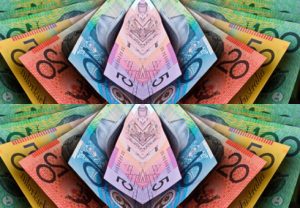Australian Dollar advances
21 September 2016 by News DeskAustralian Dollar meanwhile benefited from other factors in the foreign exchange market.
 Australian Dollar (AUD) – With low bets of Federal Reserve tightening this week the Australian Dollar began to advance as markets edged towards riskier assets, according to currency specialists TorFX
Australian Dollar (AUD) – With low bets of Federal Reserve tightening this week the Australian Dollar began to advance as markets edged towards riskier assets, according to currency specialists TorFX
Due to the Reserve Bank of Australia’s latest meeting minutes indicating that monetary policy would remain on hold for the foreseeable future rather than seeing further easing, the Australian Dollar could be in the best position to benefit from US Dollar weakness on Wednesday – which could see it push GBP/AUD down.
New Zealand Dollar (NZD) – The Pound to New Zealand Dollar exchange rate plunged to what appeared to be a new record-low for the pairing during Tuesday’s session as investors piled into the risky ‘Kiwi’ amid low Federal Reserve rate hike expectations.
With risk-sentiment returning due to lower hopes for the US economy, NZD was bullish earlier in Tuesday’s session. Investors continued to pile in until the publication of the latest global dairy trade results – which came in with a 1.7% increase.
While this report kept the ‘Kiwi’ afloat for the remainder of the day, it was unable to keep the currency near its best levels due to being the lowest increase in dairy prices since July.
Regardless, the New Zealand Dollar is in a strong position and could easily advance if Wednesday’s Fed news disappoints. The Reserve Bank of New Zealand’s (RBNZ) September meeting will also be held during Thursday’s Asian session, which could bolster ‘Kiwi’ demand if the bank takes a hawkish stance on monetary policy.
Australian Dollar advances
Pound Sterling (GBP) – Sterling plummeted against most of its major rivals during Tuesday’s session, extending its weekly lows and in some cases nearing its lowest levels since the Brexit-vote in June.
Multiple factors contributed to the latest Sterling selloff, including concerns of a post-Brexit Britain and new Bank of England rate cut bets.
Following its lows in mid-August, the Pound began a hefty recovery rally that took it closer to its best post-Brexit-vote levels. However, as of mid-September Sterling seems to be heading towards its lows once more, indicating that markets don’t have long-term faith in the currency since the vote. This week, concerns that Britain would likely not be able to remain in the single market if it wants to take a harder line stance on emigration have weighed on the Pound.
Sterling continued to trend weakly on Wednesday morning as investors prepared for the day’s central bank news, and was not particularly supported by the morning’s public sector net borrowing figure – which came in slightly better-than-expected but not enough to cheer UK investors.
US Dollar (USD) – The Pound to US Dollar exchange rate lost over half a cent in value on Tuesday, falling below the key level of 1.30 for the first time since early-August and nearing its post-Brexit-vote lows. The pair could continue falling as markets solidify their positions on the US Dollar ahead of Wednesday’s Federal Reserve meeting.
September’s Fed meeting has been speculated for a long time to be the biggest opportunity for a US interest rate hike before December, and while economic data has not supported this rate hike potential, ongoing speculation and hawkish comments from policymakers have prevented investors from giving up entirely on the possibility. Currently, markets do not expect the Fed to act during Wednesday’s meeting but playing up the possibility of a December rate hike could strengthen the Dollar against the Pound too.
However, if the Fed fails to indicate that more monetary tightening is on the way, investors could lose confidence in the bank and US economy and pile into the Pound, bringing it up from near its lows. Wednesday evening’s Fed news is vital enough to drive the forex market for the remainder of the week.
Euro (EUR) – The Pound to Euro exchange rate extended its lows on Tuesday and briefly fell below the key level of 1.16, taking it closer to its worst levels since the Brexit-vote.
The Euro, on the other hand, trended steadily and was able to hold its ground against many major currencies due to market focus being on Wednesday’s Federal Reserve meeting. With the Fed widely expected to be leaving policies frozen in this week’s meeting, the Euro has gained ground and lost volatility through US Dollar selloffs. As of Tuesday’s session, the Euro was the US Dollar’s least-volatile G-10 trade-partner.
Canadian Dollar (CAD) – The Pound to Canadian Dollar exchange rate eventually slipped during Tuesday’s session, giving up around a cent in value despite the day’s mixed oil news.
The primary reason for Tuesday’s Pound fall versus the Canadian Dollar was weakness in the Pound itself, as well as increased demand for commodity-correlated currencies in general. However, commodity news for Canada’s primary export, oil, was too mixed for investors to pile on into CAD. Throughout Tuesday’s session, prices of the commodity slipped due to low expectations of an oil production freeze agreement – but also gained due to further speculation of a possible agreement. As a result, Canadian Dollar investors had little faith that any improvements in oil price would last beyond short-term.
Disclaimer: This update is provided by TorFX, a leading foreign exchange broker, its content is authorised for reuse by affiliates.
Learn more about the Australian Dollar – Contact TorFX: Get A Quote
Click here for expert help with travel visas: Travel Visas to Australia
Want to live and work Down Under? Click here for expert help: Skilled Migration to Australia
Want to get a job Down Under? Click here for expert help: How to Get a Job in Australia
Click here for tourist information about Australia: Visit Australia


